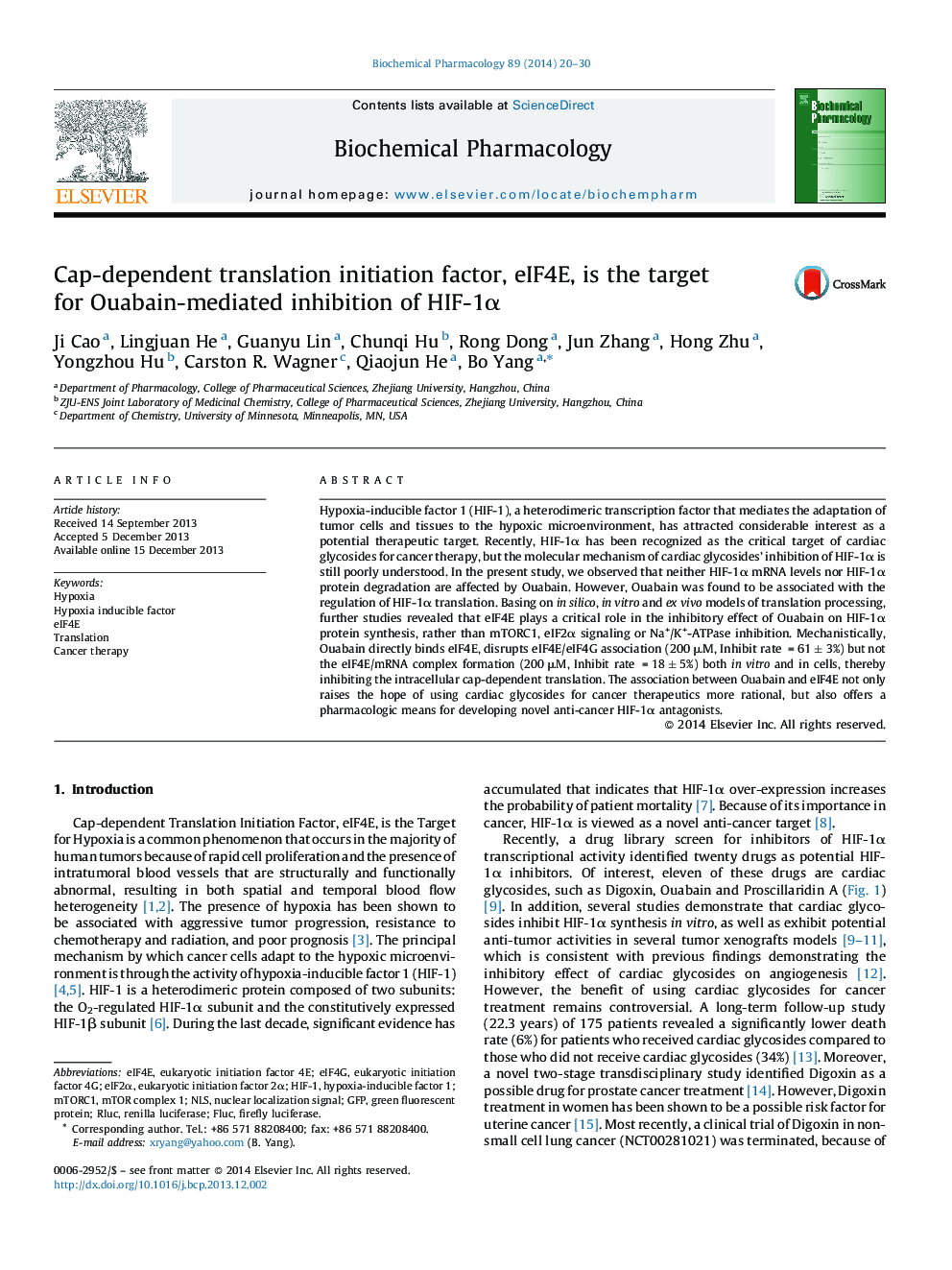| Article ID | Journal | Published Year | Pages | File Type |
|---|---|---|---|---|
| 2512312 | Biochemical Pharmacology | 2014 | 11 Pages |
Hypoxia-inducible factor 1 (HIF-1), a heterodimeric transcription factor that mediates the adaptation of tumor cells and tissues to the hypoxic microenvironment, has attracted considerable interest as a potential therapeutic target. Recently, HIF-1α has been recognized as the critical target of cardiac glycosides for cancer therapy, but the molecular mechanism of cardiac glycosides’ inhibition of HIF-1α is still poorly understood. In the present study, we observed that neither HIF-1α mRNA levels nor HIF-1α protein degradation are affected by Ouabain. However, Ouabain was found to be associated with the regulation of HIF-1α translation. Basing on in silico, in vitro and ex vivo models of translation processing, further studies revealed that eIF4E plays a critical role in the inhibitory effect of Ouabain on HIF-1α protein synthesis, rather than mTORC1, eIF2α signaling or Na+/K+-ATPase inhibition. Mechanistically, Ouabain directly binds eIF4E, disrupts eIF4E/eIF4G association (200 μM, Inhibit rate = 61 ± 3%) but not the eIF4E/mRNA complex formation (200 μM, Inhibit rate = 18 ± 5%) both in vitro and in cells, thereby inhibiting the intracellular cap-dependent translation. The association between Ouabain and eIF4E not only raises the hope of using cardiac glycosides for cancer therapeutics more rational, but also offers a pharmacologic means for developing novel anti-cancer HIF-1α antagonists.
Graphical abstractFigure optionsDownload full-size imageDownload as PowerPoint slide
